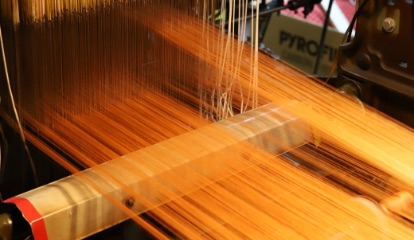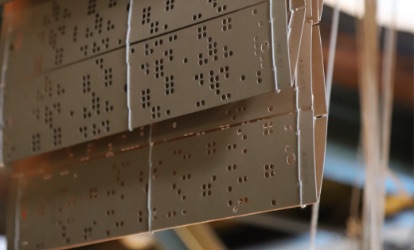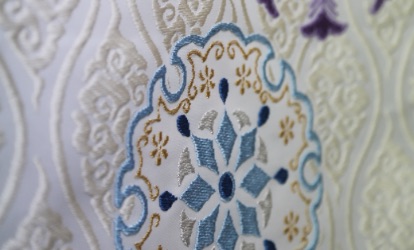Wasou
What is Nishijin-ori?
Nishijin-ori is the general term for the high-quality silk textile produced in the Nishijin district of Kyoto. Its style is extremely diverse, ranging from kimono fabric and Obi(belt) to ties, shawls, and cloth for interior decorations.
Nishijin district is renowned for its high-quality silk textile production, along with Lyon and Milan.

Fukuoka Weaving’s Textile Products
We create Nishijin-ori from start to finish, from design to yarn dyeing to weaving. This is why we accept full-custom orders.
Carefully selected and dyed yarn creates the intricate pattern of our Nishijin-ori fabric. Obi made from this fabric is very light and soft, and easy to wear.
Aside from Obi, we make Jūnihitoe kimino and Shozoku(traditional clothing of the Heian Period).
The Weaving Process
One of the unique characteristics of Nishijin-ori is that the yarn is dyed before weaving.
There are many steps to create the fabric; therefore, most of the processes are divided among craftsmen.
We will show you the manufacturing process of the fabric step-by-step.
1Design
The first step is to sketch the design of the Obi. The sketch is later used as a guide to create precise sketches on graph paper.

2Planning
Based on the graph paper sketches, the craftsmen will punch holes on a paper around the size of 33 cm (vertical) x 4.5 cm (horizontal) to indicate the positions where the warp yarn should go up and down. Once the hole-punched paper is ready, it is inserted in the Jacquard loom.

3 Preparation of yarn
1. Dyeing
After selecting the color, the yarn is dyed.
2. Reeling
The warp and weft are wrapped around a spool to ease the weaving process.
3. Warping
The process of preparing the warp yarn is called warping.
Depending on the final product, around 4,000 to 10,000 yarns are wrapped around a drum as warp yarn. Once this is completed, it is then wrapped around a wooden tube called “Chikiri” that is placed behind the drum, with cardboards in between.
4. Warp Tying
Warp yarns are inserted in the weaving machine by hand, one by one.
5. Preparing the Weft
Yarns for weft are wrapped around a bamboo tube and placed on the shuttle.

4 Weaving
When the warp yarn goes up according to the hole-punched paper, the weft yarn is weaved through one by one using the shuttle. This process is repeated until the Obi is completed.


See how the textiles are created by our Nishijin craftsmen.
On our workshop tours, you can see our craftsmen creating Obi with Jacquard looms, sketching design ideas, dyeing threads, and more.
Workshops tours are appointment only. Please book a date via the inquiry form below.